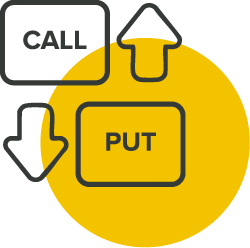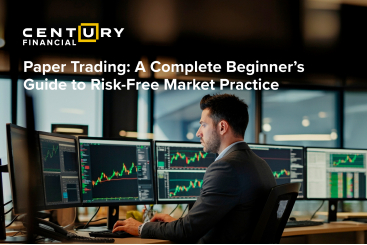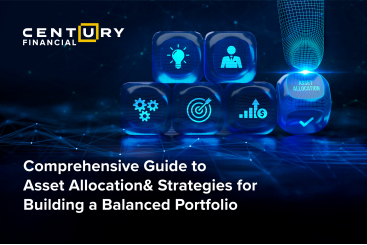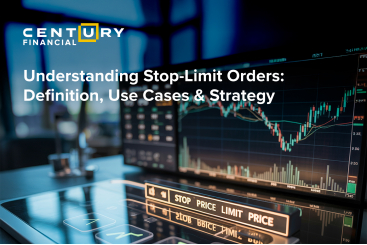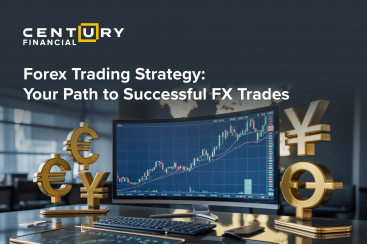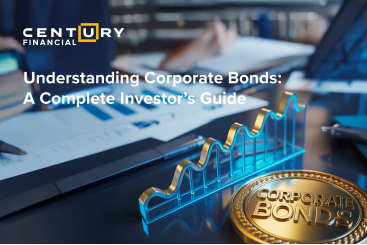Friday, October 31, 2025
Short Squeeze Explained: What It Means and Why It Matters for Traders
تم إعداد هذا المنشور من قبل سنشري للاستشارات
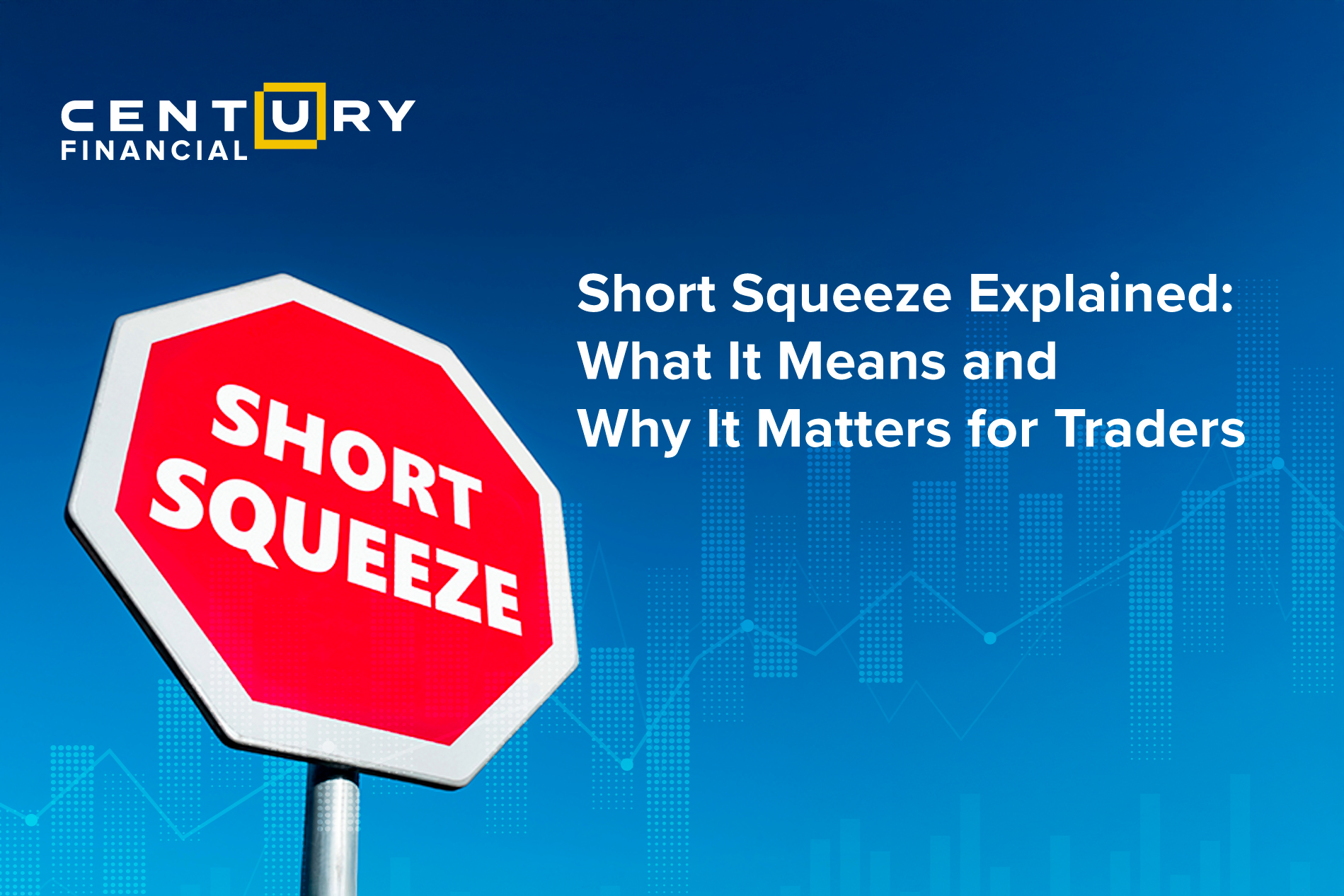
.jpg)
What Is a Short Squeeze?
The financial market and its volatility can provide enormous opportunities, but the same volatility can trap traders in situations that turn their trading strategies upside down. Short squeeze is one such phenomenon.
The definition of a short squeeze can be stated as a market condition where the price of a stock or asset climbs so quickly that traders who had shorted it are forced to buy back shares to cover their positions. This rush to exit further magnifies the rally and often results in steep, short-lived price spikes.
You can think of the short squeeze like a trap snapping shut in traders who were bearish and shorted the stock. As the price starts climbing, they might want to close their positions, or their stop-loss could get triggered—pushing the asset’s prices to climb further. But if analyzed and timed properly, short squeeze can become an opportunity, too. Let’s understand a bit more about it shortly.
What Triggers a Short Squeeze?
The first trigger can be anything that changes market sentiments ranging from company reports to geopolitical happenings. But the panic stricken buying that initiates a continuous buy loop is what locks in the situation. Some common market occurrences that could lead to short squeeze are as follows:

High bearish sentiments

High borrowing costs

Positive asset-specific events
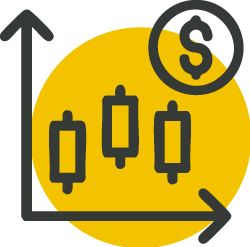
Coordinated retail buying
How Does a Short Squeeze Work?
Though there are differences in nuances, there are similarities in how a short squeeze occurs. Some indicators and conditions are common to most short squeezes, and you can observe the markets for the following chain of events to recognize a short squeeze.
High Short Interest Builds Up
This market condition starts with a stock or asset that has a significant number of short positions. Traders borrow and sell shares, expecting the price to fall. When one side of the trade garners too much volume, instability ensues.
Unexpected Positive Catalyst Appears
Then comes some news, maybe strong earnings or some other favorable update, and buying pressures rise. This unexpected trigger becomes a catalyst for an uptick in the trend. This sudden flip catches short sellers off guard.
Stock Price Begins Rising
The news continues to gain traction, and the price rises as traders and investors pour their money in. Short sellers feel the pressure of rising prices as it threatens their position, leaving them with few options. As the asset rallies, the sellers go deeper into the red.
Margin Calls and Stop-Loss Triggers Kick In
Brokers start to issue margin calls when the position is too deep in the red. So, the short sellers have two options: either add capital to maintain the position, or buy the shares back, booking their losses. Pre-determined stop-loss orders may also get triggered.
Forced Buying Fuels the Rally
Eventually, during short squeeze, short sellers are forced to close their positions by buying the asset at a far higher price. This sets another wave of buying in motion, inflating the assets prices again, thereby forcing more sellers to buy the asset.
Short Squeeze vs Regular Price Rally Trading
Here are some key differences between them:
| Point of Difference | Regular Rally | Short Squeeze |
|---|---|---|
| Primary Driver | Demand from investors buying based on fundamentals, technical analysis, sentiments, and/or convictions | Forced buying by short sellers covering their losing positions |
| Market Psychology | Optimism and conviction about company’s future | Panic and urgency as traders try to exit their short positions |
| Sustainability | Often more dependable, as it is supported by fundamentals and macro trends | Typically, short-lived, with prices reverting as the squeeze eases up |
| Participants | Long-term investors, institutions, and retail traders buying for growth | Mainly short sellers and, also, opportunistic traders utilizing the squeeze for profits |
| Price Pattern | Gradual and steady climb with enough fundamental and technical supports | Sudden, sharp spikes that arise simply because of panic buying |
| Risk Profile | Risk is tied to broader market trends; lower volatility | Extremely high volatility with risk of steep short-term reversal |
Real-World Examples of Short Squeezes
As the old saying goes, we learn the best through experience. The trading basics aside, let’s look at some real-world scenarios where the market learned what it is like to be choked in a short squeeze.
.png)
In 2021, GameStop went from a struggling video game retailer to the talk of Wall Street.
A small group of investors on a public forum banded together to inflate the price of this stock as hedge funds were shorting it heavily. As a result, the price shot up, forcing the fund houses to buy back shares at high prices, which again, made the price surge.
This episode underlined the growing influence of retail traders and the potential impact of their coordinated efforts.

The 2000s were marked by numerous once-in-a-lifetime events in the financial markets.
In 2008, the world-renowned vehicle manufacturer Volkswagen became the world’s most valuable company. Then, Porsche revealed it owned three-quarters of Volkswagen shares, leaving only a small volume for traders to put in their money. Hedge funds that were bearish about the stock were trapped and ended up paying sky-high prices just to cover their position.
Risks and Rewards of Trading a Short Squeeze
In the markets, everything has its perks and drawbacks. Even a short squeeze can provide opportunities and rewards to those with an iron-clad risk management strategy. Following are some risks and benefits of trading during a short squeeze:
Risks
Moves are unpredictable and harder to time
Limited upside on late entry
Structural illiquidity post-squeeze
Prices don’t reflect fundamentals
Elevated margin requirements
Slippage and execution risk
Rewards
Volatility creates multiple opportunities
Rapid momentum providing several entries
Chance to capitalize on institutional errors
Potential for faster short-term gains
Trading Instruments Used During a Short Squeeze
Every trade requires the right security. During a short squeeze after doing your analysis through studying charts, you can use the following instruments:
Conclusion
A short squeeze is one of the most dramatically volatile events in the markets, creating both risks and rewards for traders. While rapid spikes can create a hostile environment for traders with bearish positions, rapid momentum and strong indicators can provide a quick opportunity in otherwise sideways markets.
Having predetermined entries, exits, and stop losses can form a cushion of predictability during volatility. Choosing the right instrument and strategies are also a way to navigate a short squeeze wisely.
Other than analysis and strategies, having the perfect trading platform that gives a smooth trading experience is of paramount importance. With the Century Trader App and MT5 platforms, you can trade efficiently—no matter the market condition.
Also read:Short Selling: Risks and Rewards
FAQs
1. What is the definition of a short squeeze?
A. Short squeeze is a market condition when traders who sold the asset are trapped by rapidly increasing prices forcing them to close their position in a loss.
2. Is gamma squeeze like a short squeeze? options?
A. Not exactly. Gamma squeeze is driven by heavy call option buying that compels institutions to hedge by purchasing the stock. Gamma squeeze causes a price hike, which could cause a short squeeze.
3. How can traders identify a short squeeze before it happens?
A. Traders can monitor high short interest, unusual options activity, and low float stocks to gauge out conditions that could lead to a short squeeze.
4. What’s the difference between short selling and a short squeeze?
A. Short selling is a trade where you sell the asset because you expect it to fall, while a short squeeze is a market condition where such traders are forced to exit because of a sudden rally in the asset.
5. Can short squeezes happen in the UAE markets?
A. Yes. Stocks with low liquidity in the UAE markets can also experience a short squeeze.
6. Is trading during a short squeeze risky for beginners?
A. Yes. Without adequate understanding and strategies, rapid momentum can pull inexperienced traders under and cause immense losses.
لا تقدم شركة سنشري للإستشارات والتحليل المالي ش.ذ.م.م (الشركة) محتوى هذه المدونة، بما في ذلك أي أبحاث أو تحليلات أو آراء أو توقعات أو أي معلومات أخرى (يُشار إليها مجتمعةً باسم "المعلومات")، إلا لأغراض التسويق والتثقيف وإتاحة المعلومات العامة. ولا يُفسَّر ذلك على أنه نصيحة استثمارية أو توصية أو دعوة لشراء أو بيع أي أدوات مالية.
كما يجوز نشر هذه المعلومات عبر قنوات مختلفة، بما في ذلك موقع الشركة الإلكتروني، ومنصات الغير، والنشرات الإخبارية، والمواد التسويقية، ورسائل البريد الإلكتروني، ووسائل التواصل الاجتماعي، وتطبيقات المراسلة، والندوات الإلكترونية، وغيرها من وسائل التواصل. وبينما تسعى الشركة لضمان دقة المحتوى، فإنها لا تضمن اكتماله أو موثوقيته أو تحديثه في الوقت المناسب. وعليه، فأي قرارات تُتخذ بناءً على هذه المعلومات تكون على مسؤوليتك الشخصية. ولا تتحمل الشركة أي مسؤولية عن أي خسارة أو ضرر ناتج عن استخدامها.
ينطوي تداول المنتجات المالية على مخاطر كبيرة، بما لا يتناسب مع جميع المستثمرين. فيُرجى التأكد من وعيك التام بالمخاطر، وطلب الاستشارة المهنية المتخصصة إذا لزم الأمر.
يُرجى الاطلاع على بيان كشف المخاطر الشامل المتوفر على موقعنا الإلكتروني.


